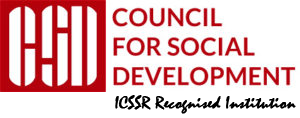July 15, 2015
Venue: Durbhai Deshmukh Auditorium, India International Centre (main) New Delhi
Abstract
The topic of the lecture ought to be seen against the background of the economic situation that India is facing currently. The UPA had ambitious plans for education and health, both indices on which India is substantially behind other countries at her stage of development. The Eleventh Five Year Plan’s (2007-12) achievements have fallen considerably short of targets while the Twelfth Five Year Plan’s (2012-17) actual expenditures are so much below planned targets that it is now impossible to realise even Eleventh Plan expenditure/outlay ratios. It will require much more effort and resources than is being expended today to make up for these large short-falls in a reasonable period of time.
Moreover, following the higher devolution of taxes by the 14th Finance Commission, the NDA government at the Centre has made cuts in its spending on social sectors, indicating that it will maintain full funding (at expenditure levels budgeted in 2014-15) only for a few schemes. This is with the expectation that States, with their share of increased devolution and resulting flexibility, will be able and willing to put in the resources and effort required to bridge the gap that has opened between actual and original intent.
In the meantime, the Centre has unveiled ambitious plans for infrastructure and a Make in India campaign, indicating greater emphasis on physical rather than human capital formation. Among other arguments quoted for this shift in emphasis are the opportunities and compulsions associated with the demographic dividend that India is in a position to harness from the fact that the share of the working age population in total population is increasing.
With this background, the lecture will provide an overview of how economists have looked at demography and human capital in trying to answer why growth rates in per capita income vary across countries. It will then, in the light of recent demographic projections, try to present where India currently stands not only with regard to the demographic transition proper but also another associated traditional driver of growth – the shift of labour away from agriculture.
